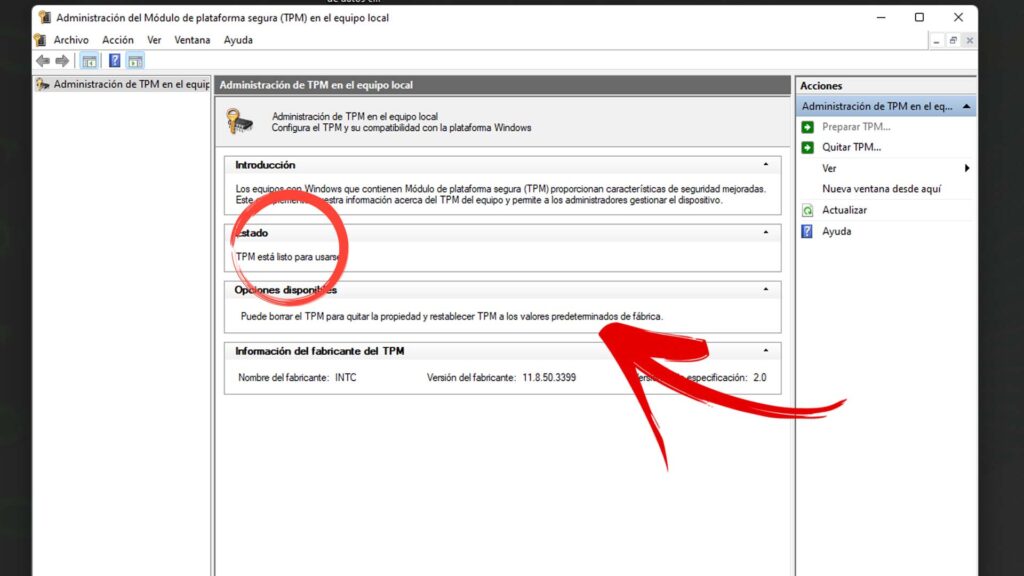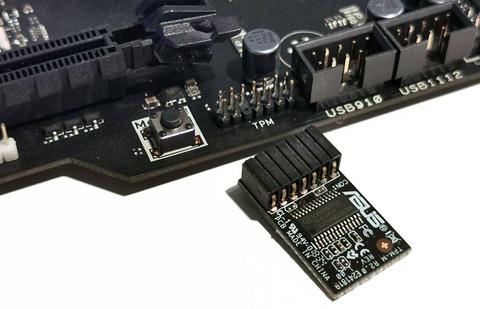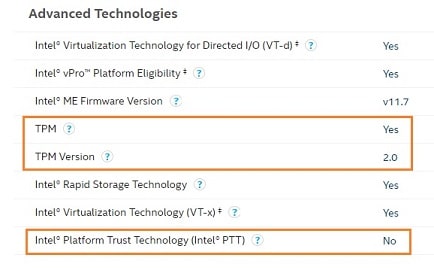The Difference Between PTT and TPM How to Activate them?

- Trust Technology Platform
- Trusted Platform Module
- How do I know if I have PTT integrated in my processor?
There is a difference between the PTT y TPM that are used for the new Windows 11 operating system. However, among the requirements of the installation includes this requirement, but we can enable any of the 2 to be able to install Windows 11.
Both technologies rely on the same thing, to provide security-related functions and hardware. A chip TPM is a secure cryptographic processor that helps you with actions such as generating and storing cryptographic keys, as well as limiting their use. So the PTT also serves the same function.
Trust Technology Platform
The PTT by its English synonyms (Trust Technology Platform) o Trusted platform technology, which refers to the term "Plataforma Segura". Gradually this technology is found in the embedded technology in specific Intel and AMD processors. So before installing Windows 11 we should check if our processor has this integrated technology. In this case I have a processor Intel Core i7 7700 @3.60 Ghz. So you can look on Intel's official website to see if you have this technology integrated.
Trusted Platform Module
The TPM for its English acronym (Trusted Platform Module) o Secure Platform Module and Trust, Compared to the PTT, this module is physical and you can easily locate the slot connected to the motherboard with the naked eye. And to find out if we have the TPM at a glance we can locate it.

If the module is not physically connected, it means that we do not have it and we resort to the alternative.
How do I know if I have PTT integrated in my processor?
The easiest way to find out is to look at the Intel page and its features as shown below:
- Intel® Platform Trust Technology (Intel® PTT) Intel® Platform Trust Technology (Intel® PTT) provides the capabilities of standalone TPM 2.0. Intel PTT is a platform functionality for credential storage and key management using Windows 8*, Windows® 10 and Windows* 11. Intel PTT supports BitLocker* for hard drive encryption and meets all Microsoft requirements for firmware secure platform module (fTPM) 2.0.
Find out if your NUC supports these technologies
See the specifications of your Intel NUC at ark.intel.com, in the Advanced Technologies section.

As you can see in the example we have the 2 technologies integrated into the same, but in my case in the official page does not come out that I have the PTT. So I have to access the BIOS to find out if my processor has it.
What is the difference between PPT and PPT?
As mentioned above, the PPT is a technology integrated directly into the processor from certain generations onwards. On the other hand, TPM is a physical device that comes connected to the motherboard. We can see it physically connected while PPT we need to enter the bios to look for the specifications to know if it is integrated.
I will take as a reference this video I have made as it explains in detail how to access the BIOS and enable TPM and PTT.
To enable PPT or TPM follow these steps:
- Turn off your pc completely
- Turn it on and press the "F12" key to enter the BIOS menu (in case of gigabyte boards).
- Let's go to the "peripherals"
- We look for the option of Intel Platform Trust Technology and we enable it, in the case of TPM we enable it anyway.
- Save the BIOS settings and exit.
- The pc will restart.
- Now go to home> type "tpm.msc"and verify that it is enabled.
- Ready.

The TPM is ready, now we will proceed to install Windows 11.
What to do if I don't have PTT and TPM to install Windows 11?
Fortunately there are alternatives to install it making a kind of bypass in the Windows 11 operating system. We have written an article where we explain in detail how to do it you can visit it in this link Rufus helps you bypass TPM and Secure Boot in Windows 11(Opens in a new browser tab)

Leave a Reply
You must be logged in to post a comment.